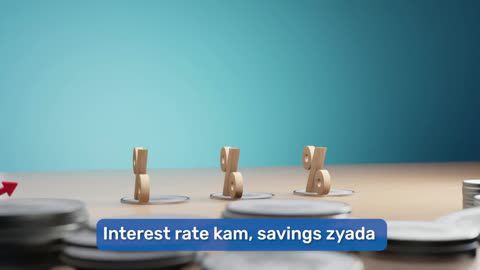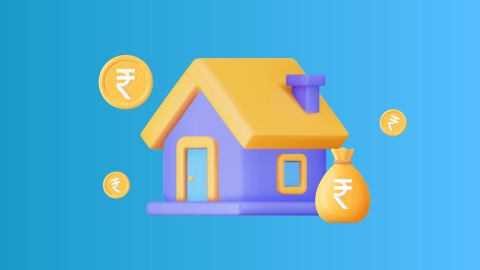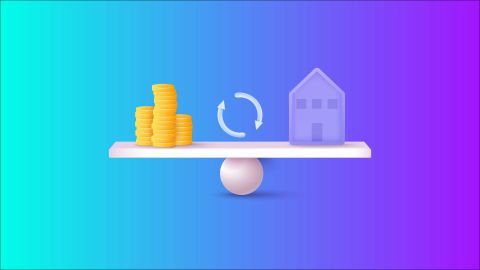In the context of home loans, the Memorandum of Deposit is a legal document that serves as a record of the security pledged by the borrower to the lender. This security typically takes the form of the property being financed by the home loan. The MOD is created to formalise and document the collateral provided, establishing a clear legal record of the transaction. Read on to understand more about the MoD charges, regulations, standards, and implications that home loan borrowers need to understand when managing their home loan finances.
What is MOD?
A Memorandum of Deposit (MOD) is an important legal document used during the home loan process. It is executed by both the lender, usually a bank or financial institution, and the borrower. The MOD serves as proof that the borrower has deposited the title deeds of the property with the lender as security for the loan. This step is generally completed once the final instalment of the loan is disbursed into the borrower’s account. In addition to processing fees, the borrower must also pay a specific charge towards the MOD, which forms part of the overall loan cost. Since this document ensures legal security for both parties, understanding its meaning and importance is essential before proceeding with a home loan agreement.
What is MOD in home loan?
A Memorandum of Deposit (MOD) in home loans is an agreement executed by a borrower in favour of the lending institution. The MOD acknowledges that the property being purchased or constructed with the borrowed funds is being held as security for the loan. This document is usually submitted to the local registrar to create a mortgage deed or equitable mortgage, which essentially means the ownership of the property is transferred to the lender until the loan is fully repaid. Any subsequent dealing with the property requires a No Objection Certificate (NOC) from the lender. The MOD offers legal protection to the lender in case of default by the borrower.
Beyond its legal significance, the MOD also involves specific charges, generally between 0.1% and 0.5% of the loan amount. These fees cover administrative tasks such as document verification, registration costs, and legal expenses. It’s advisable to register the MOD beforehand and consult the Sub-Registrar Office (SRO) to ensure the mortgage process is smooth and transparent.
Understanding MOD charges is just one part of securing your dream home. If you are planning to buy a property, exploring competitive home loan options with transparent fee structures can make a significant difference to your overall borrowing cost. Check your home loan eligibility with Bajaj Finserv today and discover attractive interest rates starting at 7.45%* p.a You may already be eligible, find out by entering your mobile number and OTP.
Understanding MoD charges
Memorandum of deposit
MoD charges are associated with the creation of a Memorandum of Deposit, which serves as a record of the security pledged by the borrower to the lender. This security is often in the form of property collateral against the home loan.
Implications for borrowers
- Collateral protection: Exploring how MoD charges help protect the lender's interest by creating a legal record of the collateral deposited.
- Security documentation: Understanding the role of the MoD in formalising the security documentation process in home loan transactions.
Regulatory framework
RBI guidelines on MoD charges
- Transparent disclosures: Examining how the Reserve Bank of India (RBI) mandates transparent disclosures regarding MoD charges, ensuring borrowers are fully informed about the financial implications.
- Compliance standards: Assessing the regulatory standards set by the RBI to govern MoD charges and protect the interests of borrowers.
Market practices and variability
Different approaches among lenders
- Variations in MoD charges: Analysing how different lenders may have varied approaches to MoD charges, potentially affecting the overall cost for borrowers.
- Negotiation possibilities: Discussing whether borrowers have room for negotiation regarding MoD charges with lenders.
Economic conditions and MoD charges
- Interest rate impacts: Evaluating how fluctuations in interest rates may influence MoD charges and the broader economic conditions.
- Borrower awareness: Emphasising the importance of borrower awareness regarding market conditions and their potential impact on MoD charges.
Strategies for borrowers
Managing MoD charges effectively
- Strategic repayment planning: Offering insights into how borrowers can strategically plan repayments to manage MoD charges efficiently.
- Communication with lenders: Highlighting the significance of open communication with lenders to understand and manage MoD charges effectively.
When choosing a home loan, selecting a lender with transparent charges and flexible repayment options can help you manage costs like MOD more effectively. Check your home loan offers from Bajaj Finserv with loan amounts up to Rs. 15 Crore* and tenures extending to 32 years. You may already be eligible, find out by entering your mobile number and OTP.
Alternatives and considerations
- Understanding MoD in loan closure: Discussing the role of MoD charges during the closure of a home loan and how borrowers can navigate this phase.
- Refinancing explorations: Considering whether refinancing is a viable option for borrowers seeking to mitigate MoD charges or explore better terms.
How MOD works for home loan?
A Memorandum of Deposit (MOD) plays an essential role in the home loan process. Here’s how it typically works:
Property document deposit: Once a home loan is sanctioned, the borrower deposits the property’s original title deeds with the lender. This act formally secures the property as collateral for the loan.
Execution of the mod: A Memorandum of Deposit is created and signed by both parties, confirming that the lender holds the property deeds as security.
Calculation of charges: MOD charges are calculated as a small percentage—generally 0.1% to 0.5%—of the total loan amount. For instance, on a loan of Rs. 20 lakhs, a 0.3% charge equals Rs. 6,000.
Legal safeguard for the lender: The MOD provides the lender with the legal right to repossess the property in case of default.
Mortgage registration: The document is registered with the local Sub-Registrar Office, ensuring transparency and legal validity. This process protects both borrower and lender, streamlining property ownership transfer once the loan is repaid.
Who pays the MOD-related charges?
Although the Memorandum of Deposit is prepared and executed by the lender, the responsibility for paying the associated charges lies with the borrower. MOD charges usually range between 0.1% and 0.5% of the total sanctioned loan amount. These charges cover documentation, registration, and administrative expenses. Borrowers should include this cost while estimating their total loan expenditure. Paying the MOD fee is a mandatory step to ensure the legal validity of the mortgage, helping both parties maintain a transparent and well-documented loan process.
As you budget for your home loan, it is important to factor in all associated costs, including MOD charges and processing fees. Choosing a lender with competitive processing fees and no hidden charges can reduce your financial burden significantly. Check your loan offers with Bajaj Finserv and benefit from hassle-free documentation and approval within 48 hours*. You may already be eligible, find out by entering your mobile number and OTP.
How to cancel MOD for home loan?
To cancel the Memorandum of Deposit (MOD) for your home loan, you typically need to follow these steps:
- Contact lender: Reach out to your home loan lender or bank's customer service department either by phone, email, or visiting a branch.
- Request cancellation: Clearly state your intention to cancel the MOD facility attached to your home loan account.
- Provide details: Furnish your home loan account details, such as account number, to facilitate the cancellation process.
- Written confirmation: Some lenders might require a written request or a formal application for cancellation. Ensure you comply with this requirement.
- Wait for confirmation: Once your request is processed, the lender will confirm the cancellation of the MOD facility in writing or through your account statement.
- Check account status: Regularly monitor your home loan account to ensure the MOD facility has been successfully cancelled and there are no unexpected deductions.
Remember to clarify any charges or penalties associated with cancelling the MOD facility with your lender beforehand to avoid any surprises.
In conclusion, understanding MoD charges is vital for Indian home buyers as they navigate the complexities of home loan repayment. By unravelling the intricacies, comprehending regulatory frameworks, and adopting strategic approaches, borrowers can make informed decisions aligned with their financial goals. This comprehensive guide aims to empower individuals to navigate the specific nuances of MoD charges, fostering a clearer understanding of their implications within the Indian home loan market.
Now that you understand the importance of MOD and associated charges, you are better equipped to make informed home financing decisions. Taking the next step towards homeownership becomes easier with the right financial partner offering transparent terms and competitive rates. Check your home loan eligibility with Bajaj Finserv and get started on your home buying journey with loans up to Rs. 15 Crore* at interest rates starting from 7.45%* p.a You may already be eligible, find out by entering your mobile number and OTP.
Helpful resources and tips for home loan borrowers




